Built at the behest of Napoleon III, the opulence of Opéra national de Paris made a mark whose resonance ripples till now. After a short stroll through a dimly lit entrance, the foyer opens up in width, height, light and might. No doubt, this place is lavish. Seeing something that stands out as a symbol of wealth and wonder as it celebrates its 150th anniversary leaves one wondering just how grandiose this must’ve been back then. While it was intended to premiere the Paris Opera, it also went on to house the Paris Opera Ballet and the Paris Opera Open Library Museum. In 1910, it served as the backdrop for Gaston Leroux's novel The Phantom of the Opera which gained greater popularity through Andrew Lloyd Webber’s 1986 musical. Although it’s the 13th opera house in Paris, Opéra de Paris has been described by Hanser as “probably the most famous opera house in the world, a symbol of Paris like Notre Dame Cathedral, the Louvre, or the Sacré-Coeur Basilica”, so of course, this monument historique was a must see.
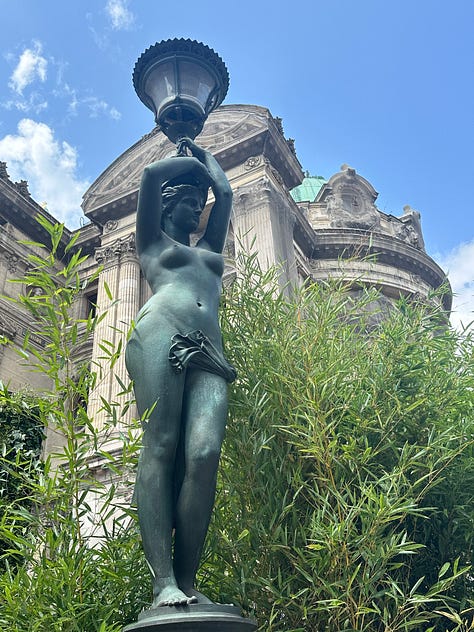
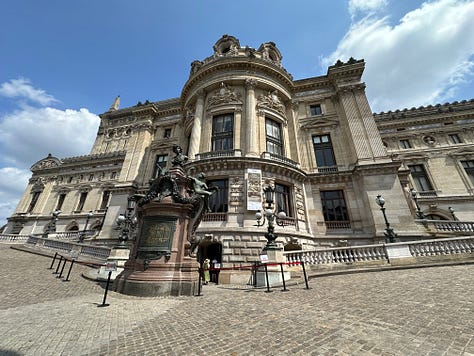



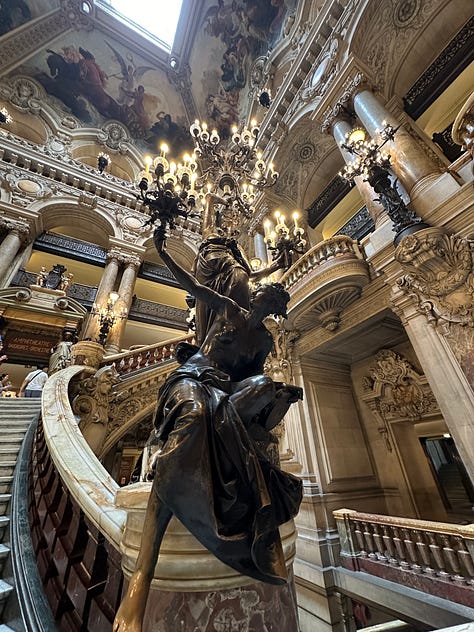
I looked around at the myriad nationalities that had ensured they had some sort of experience here. Some were taking guided tours while others made up their own meaning while meandering. A few self-directed photo shoots were also in motion. One made me feel like an emperor was actually going to arrive for the performance and even if not, this damsel was decked out in her finest gown at midday, personal photographer on the ready!
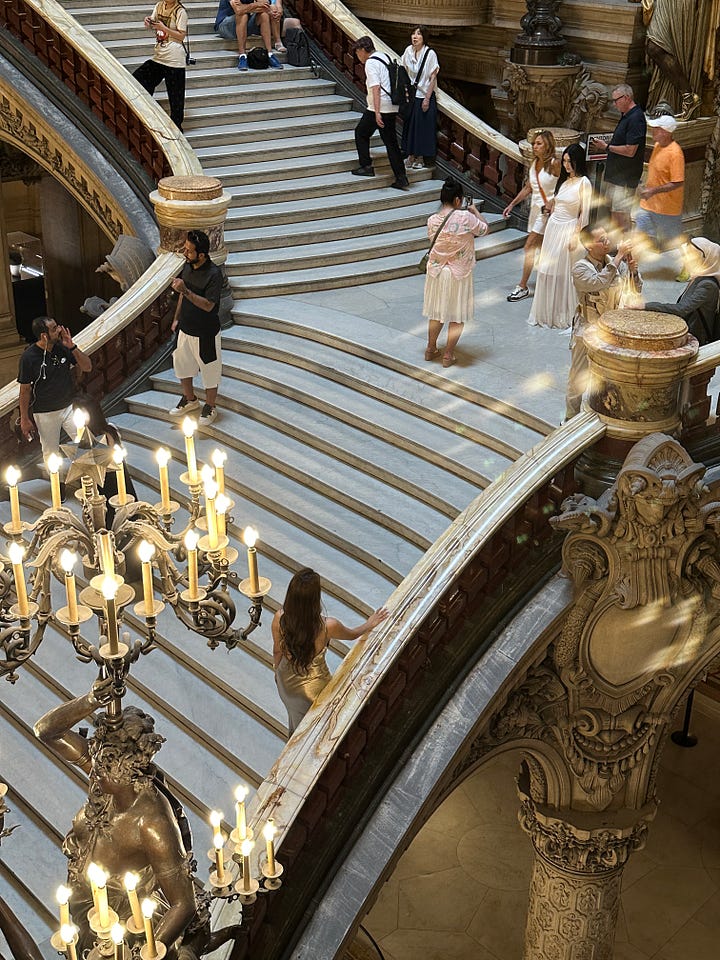
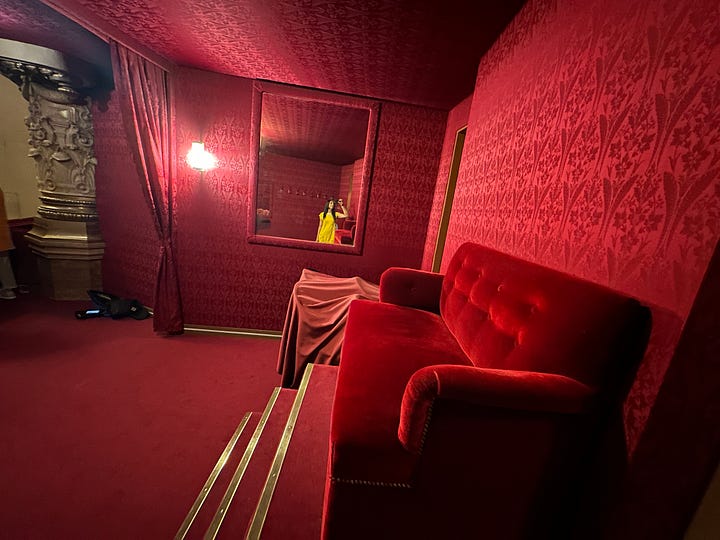
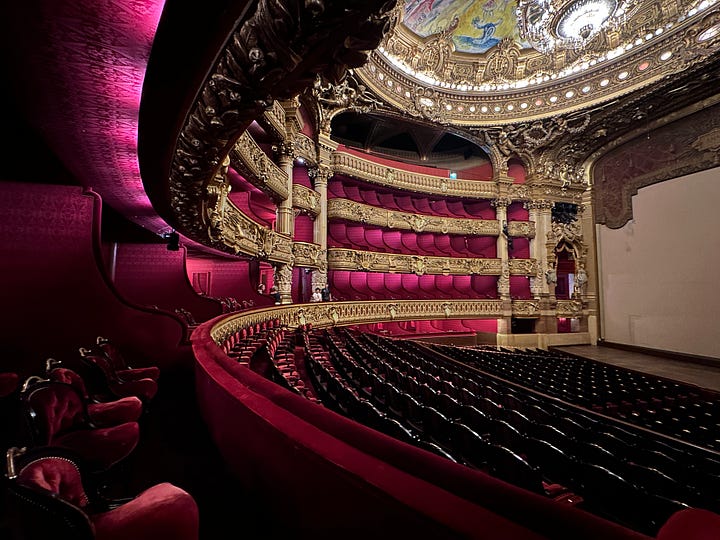
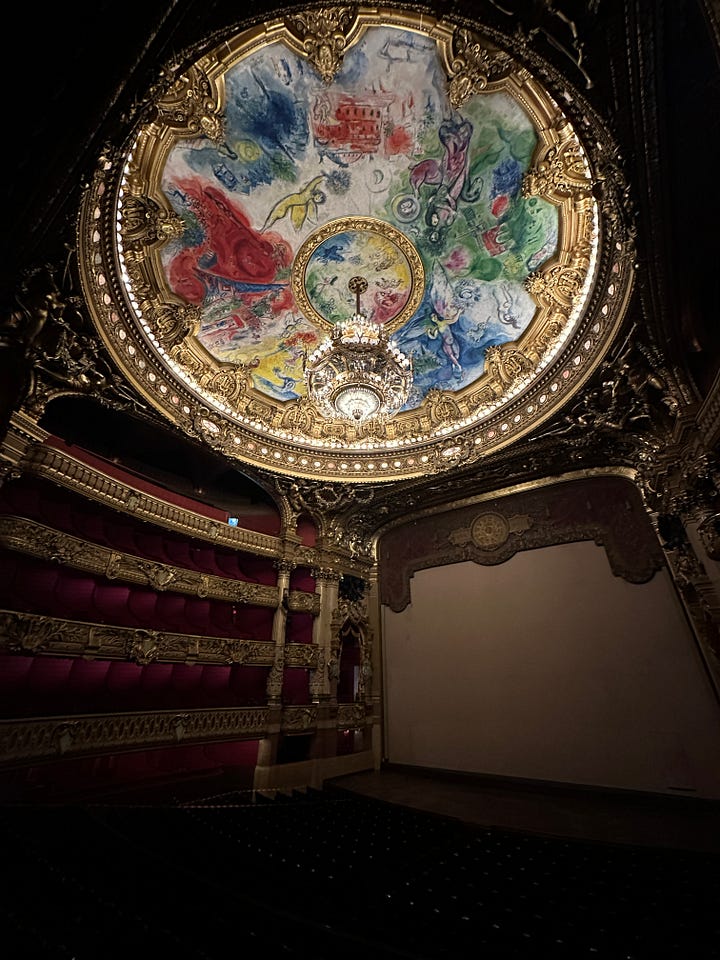
I appreciate seeing such intricate effort placed purposefully on spaces not only to display, but also to inspire creativity. In the midst of some renos now, I’m keenly aware how selecting materials in isolation is one thing, but it takes talent to bring beauty together in a way that enables the discrete designs to shine and align, both on their own and as part of a larger conversation.
I think of the balance between the I and we - of how each of us takes the stage as protagonist and yet (whether or not we make sense of the script), also as a pivotal part of a larger play. How can I look left, right, up, down, around and see that you and I actually are the set?
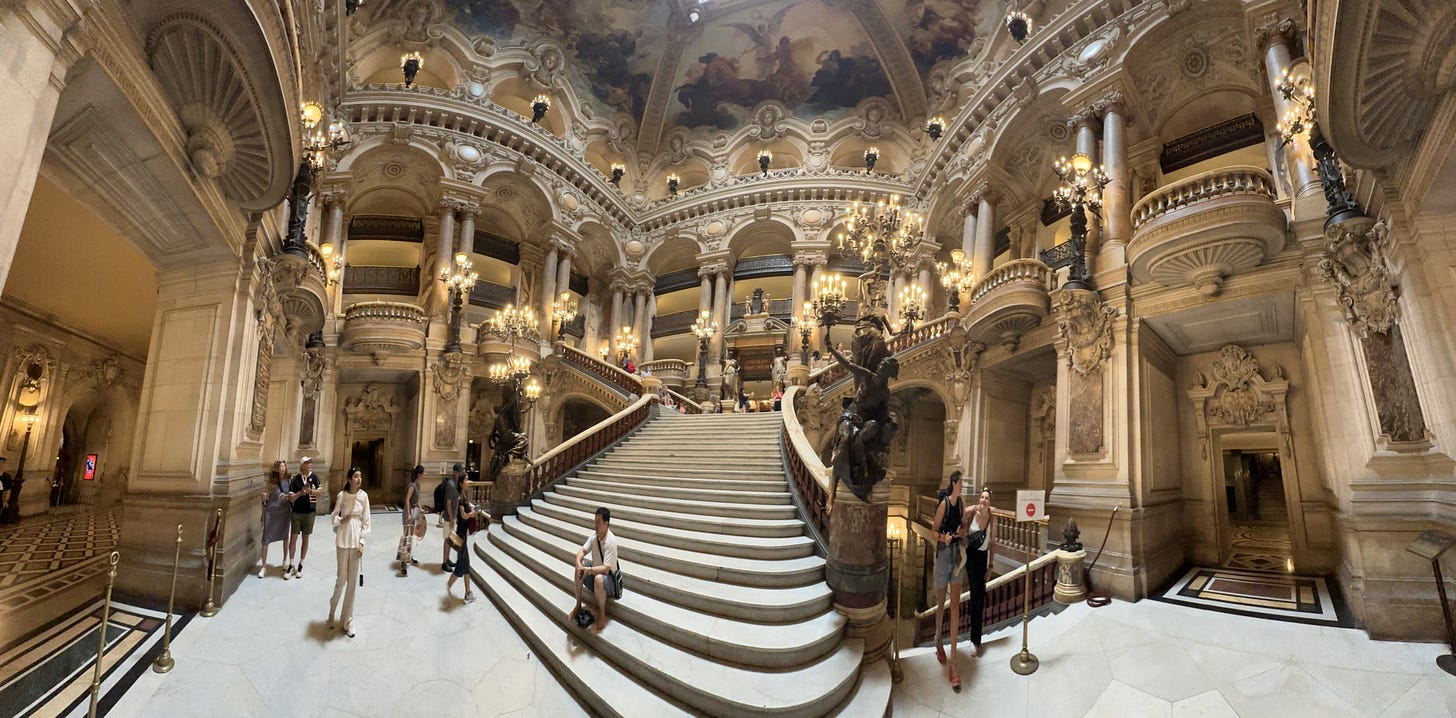
Also known as the Palais Garnier after its architect Charles Garnier, the main character in the opera house is the staircase. Ceremonial and wide, this formidable focal point with its white marble stairs and red and green balustrades bifurcates at the landing that leads to the Grand Foyer. As a case in point to how everything and everyone is in dialogue, 32 year old Garnier noted that when the ceiling paintings were affixed two months before opening, they were too dark. Painter Isidore Pils needed to enlist the help of his students to redo the paintings (in place on the ceiling!), finishing only as the scaffolding came down on the eve of its debut.


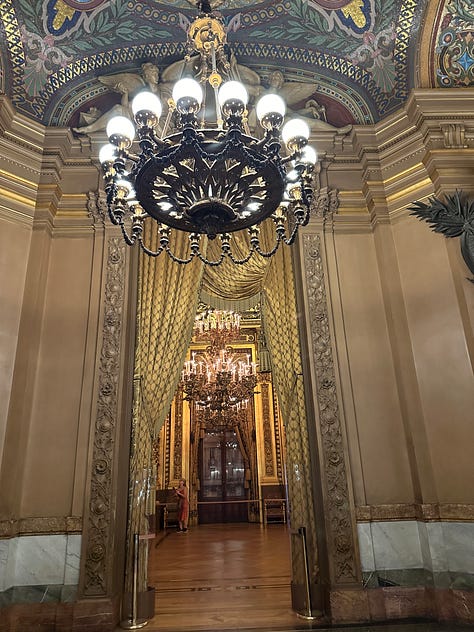
As we stepped out into the sun, I felt like I’d swallowed art, history and neoclassical architecture in one gulp. And still, or perhaps because of it, I craved gelato. I watched wistfully as the woman behind the counter wound around the cone to blossom the rose. Somehow serving treats too can transform action into art.
Juxtaposing the many monuments that’s made Paris infamous in the past, today too there are several famous formations that carry on the tradition. Built by Canadian-American architect Frank Gehry, the Louis-Vuitton Foundation’s deconsrtuctivist design was said to have cost approximately £800 million. In spite a complaint (which was dismissed in court), the nonprofit aims to promote art and culture.

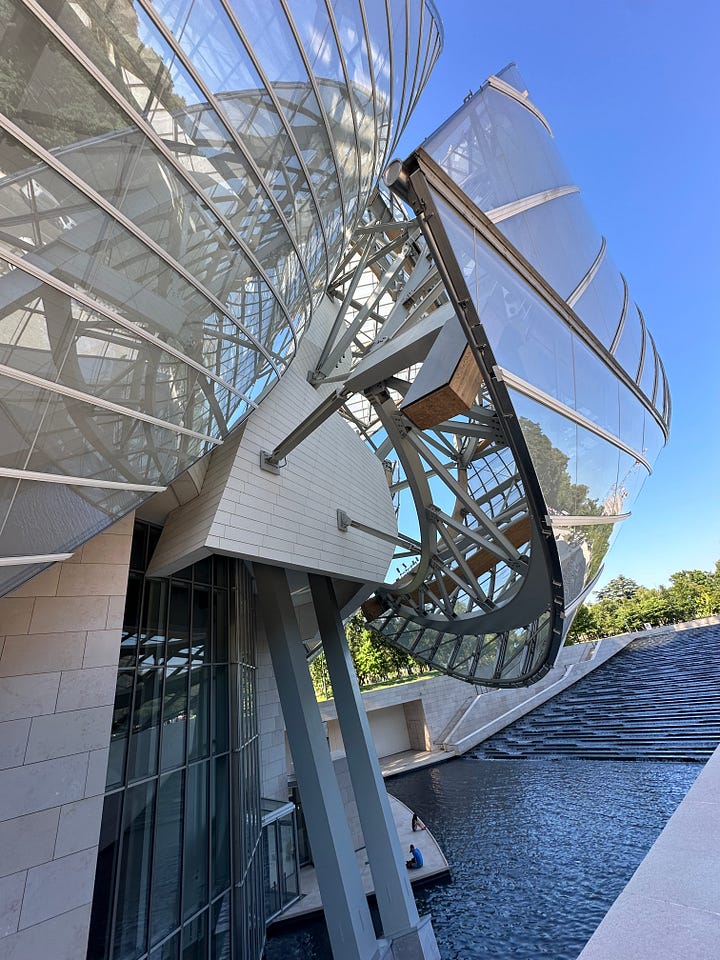
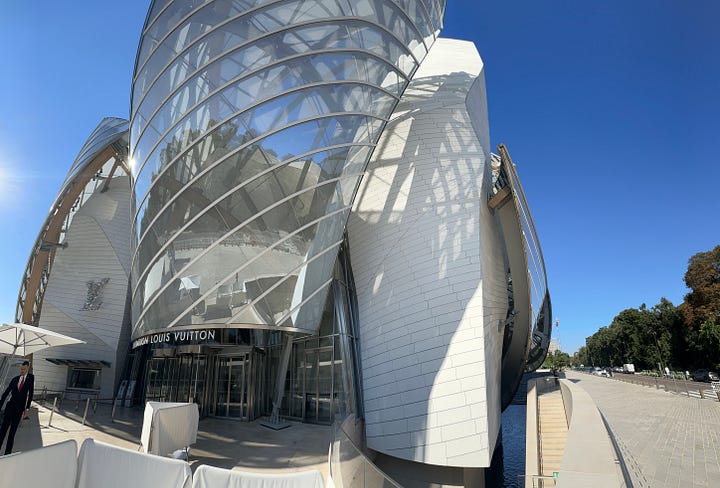
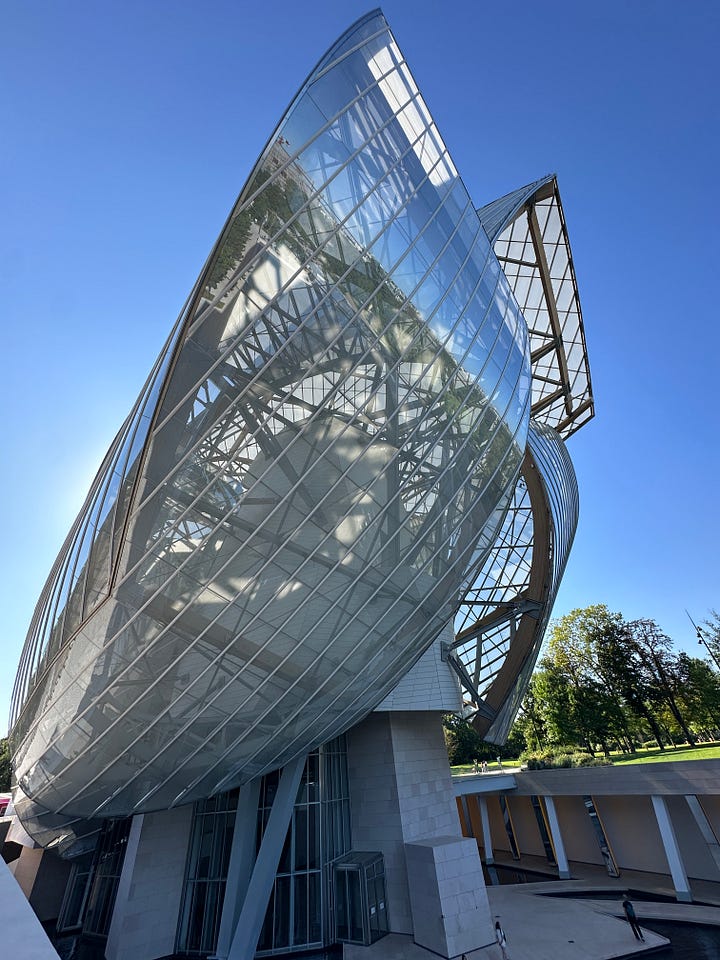
What determines the value of art? Likely, the banana piece 'Comedian' that sold for $6.2 million has people in polar parties. Perhaps, it’s as simple as offering perspectives. Of how in the dark, one man feeling an elephant’s tusk is as valid an interpretation of the majestical mammal as is another one hugging its trunk-like legs or, yet another who’s at its slender tail - well, at least that’s what Rumi’s rendition relays.
I perused. My gait and wait mirrored what mattered in my mind.
How can each of us embody cultural curators, whereby we work together to enhance awareness and understanding within and among each other? Like these window panes, may we also be the way in (and out) for the Light …
Inspiration and awe are always welcomed. Sometimes though, art doesn’t have to make sense. Of course, when it evokes relevance, reverence and remembrance - like this exhibit reminding us of the Olympic vibe - then it’s more likely to have resonance.
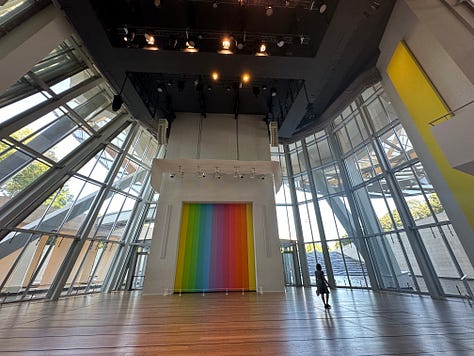
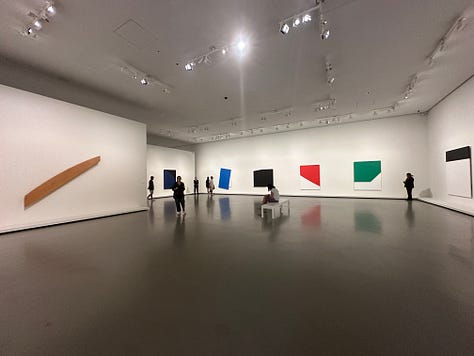
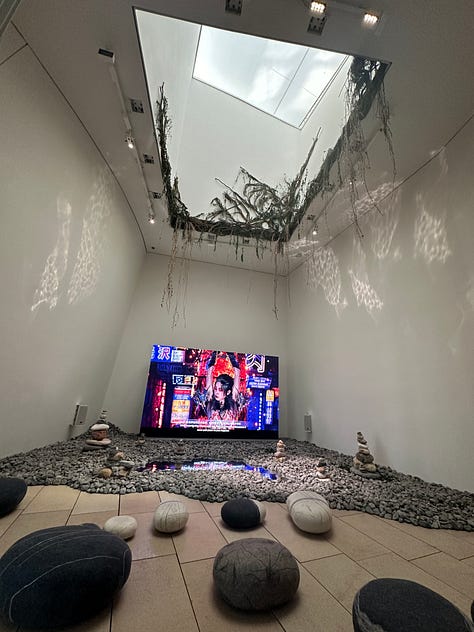
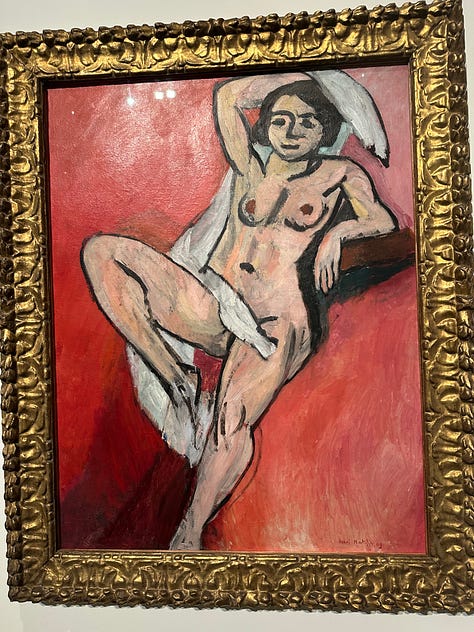


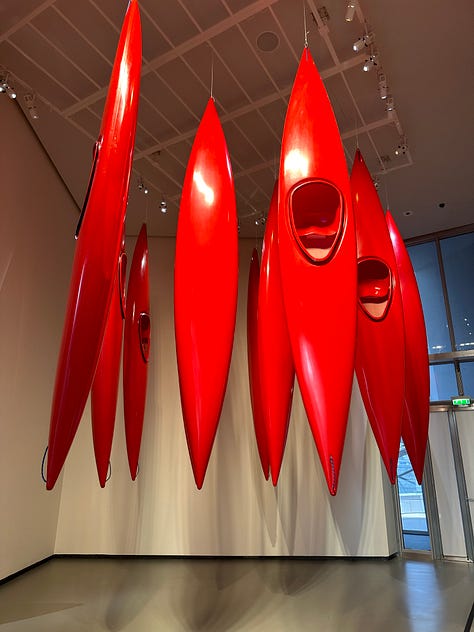


Serendipitously finding myself in Paris had many perks, including time to experience oozing culture in its varied forms. From its illustrious past to the perky present, Paris is teeming with culture and creativity, and as most know, quite the character.

May we be windows through which our cultural awareness multiplies manifold,




